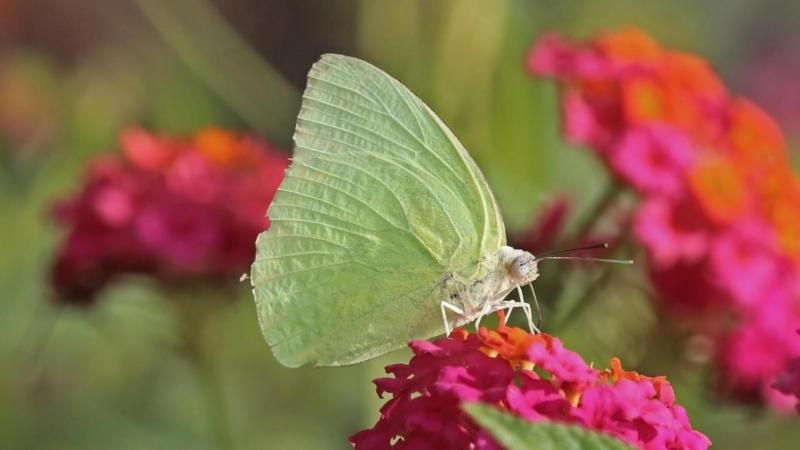Plants have many tricks in their hat to attract pollinators—vivid colours, attractive scents, exciting shapes and patterns, heat and also electric potential. But what is fascinating is how these pollinators process these attractive cues from various plants to pick which flower to visit. If you love chocolates, which one would you choose in a big bag of assorted chocolates? Well, most pollinators must have a similar dilemma. Now, a recent study throws some insights into how insects process so many cues from flowers.
The study, by researchers at the Indian Institute of Science Education and Research, Thiruvananthapuram (IISER-Thiruvananthapuram), was published in the Journal of Experimental Biology. It shows that pollinators have specific colour preferences, can learn new colours and differ in their choices based on their gender. The study was funded by the Department of Science and Technology (DST) and the Department of Biotechnology (DBT), Government of India.
The researchers investigated the colour preferences and learning abilities in the common emigrant butterfly (Catopsilia pomona). These brightly coloured butterflies have robust colour vision and are highly dependent on colour signals for foraging and mate choice. They are medium-sized butterflies belonging to the pierid family and found widely distributed in India.
“Studying the integration of different sensory perceptions provides us with insights on how insects manage these complex processes in their tiny brains,” says Dr G. S. Balamurali, the lead author of the study. “It also shows how they successfully adapt to the changes in the habitats in which they operate.”
The researchers conducted several experiments on these butterflies to understand their innate colour preference, ability to learn about colours and the effect of flower odour on colour learning and colour preferences. They released hungry male and female butterflies into a cage which had stimuli of four colours—green, yellow, blue and red. They found that females showed an innate preference for yellow, and males chose blue and yellow.
In another experiment, the researchers divided the butterflies into two sets. They trained the first set to respond to the colour blue by giving it a sucrose solution as a reward, while the other one was trained for green. After two rounds of short training, they showed the butterflies four colours and recorded their first and subsequent choices.
The researchers observed that many butterflies that were trained for the blue colour picked blue in the test. However, those trained for green didn’t do well. While most males that were trained for green picked green, females chose yellow and green, sticking to their innate colour preferences. Interestingly, when they were trained extensively for green stimuli, most males and females picked green when shown the four colours.
“Our results demonstrate that both females and males rapidly associated the blue stimuli with a reward after minimal training. It suggests that they can learn to associate different colours with rewards quickly. The initial difficulty to associate green as a flower is overcome by repeated training with rewards,” says Dr G.S. Balamurali.
Besides the colour, the odour of a flower is crucial for flower-visiting insects to decide on which flower to choose. The researchers tested if olfactory cues enhance colour learning among these butterflies. They trained males and females to a green stimulus and later presented all four colours in the presence of flower odour. They observed that female butterflies picked yellow, and males chose green significantly more than other colours. This observation shows that the integration of floral scent overrides the learned association of colour with reward.
“Our results thus show that the behavioural context influences the integration of information from different sensory modalities. The females often associate green with leaves, on which they lay eggs, and floral scents with flowers. In C. pomona, females who learned to associate green with reward revert back to a preference for yellow, a common colour for flowers, in the presence of floral scent. Such reversal of learning has not been reported earlier in any insects,” explains Dr Balamurali.
The current study is the first to show how flower-visiting insects process multiple sensory information to decide on which flower to forage.
“Worldwide, there is a decline in the number of pollinating insects. Hence, understanding how these insects process information and how anthropogenic influences, such as the use of pesticides, will affect it, can help us devise conservation measures, ” concludes Dr Balamurali.
Source: Amidst the alluring colour and scents, here’s how butterflies pick their flower | Research Matters













